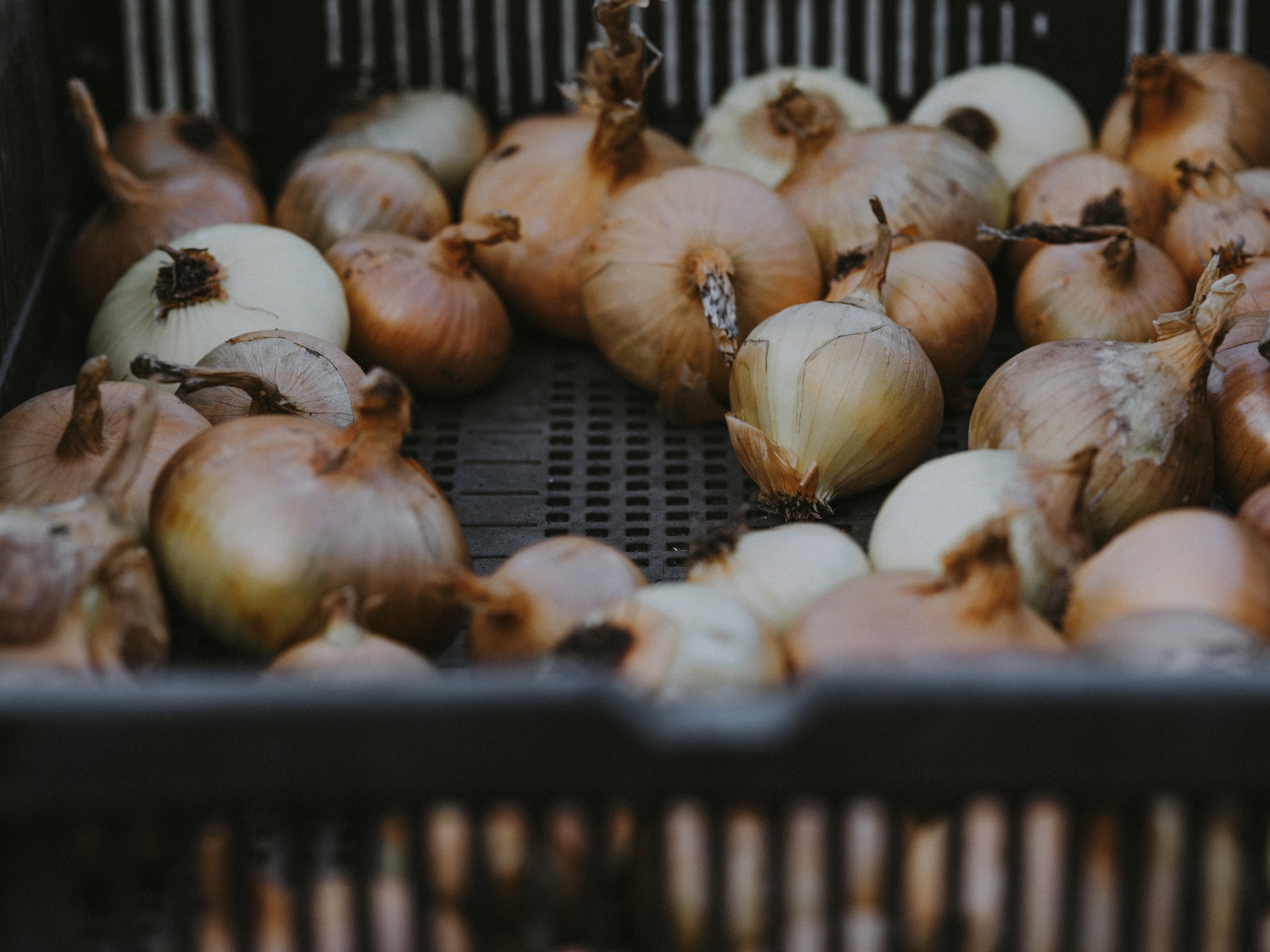Onions grown from direct seeding reach technological maturity by late August and September when there is a higher likelihood of rainfall, and air temperatures are trending downward.
Harvesting Onions
For this reason, the leaves are not allowed to dry completely. Harvesting begins when the leaves are still partially green, but the false stem has softened, and 50-80% of the leaves have fallen over. Such onions (with partially green leaves) are mowed using a forage harvester, cutting the leaves 6-8 cm above the “heads,” and the leaves are removed from the field. After the necks partially dry (which takes a few hours), the bulbs are harvested with a combine and transported for further processing.
Onions grown from sets mature earlier than those grown directly from seed, typically in July and August when there is less rainfall. If the weather permits, they are pulled or dug up with appropriate tools and left in the field for a week to dry. After being dug up, they are covered with leaves to prevent sunburn on the bulbs. Once adequately dried, they are cleaned of leaves and soil, gathered into bags or box pallets, and transported to storage.
The yield of onions grown from direct seeding varies from 40-50 t/ha, while those from sets range from 20-30 t/ha.
Storage of Onions
Onions that are completely dried in the field are further cleaned of any remaining debris (leaves, soil clumps, roots, weeds). Damaged and diseased bulbs are separated, then the remaining bulbs are calibrated according to customer specifications and packed in bags of 5 to 10 kg. Healthy and dried bulbs can also be stored through the winter. The application of sprout inhibitors extends the storage period.
Onions harvested mechanically or those not left to dry in the field still have not completely dried outer skins, and the necks are still green and juicy. After separating such onions from all impurities and any damaged bulbs, they are sent to a drying facility. The dryer must have a perforated floor with a 4-meter layer and must have a system for ventilating warm air and regulating air humidity.
After drying, the onions are ready for storage or sale. Before sale, they must be calibrated and packaged.
The growth regulator maleic hydrazide (MH) is applied to the green leaves while they are still active. This regulator can move through the vascular system via the bulb to the vegetative tip, where it prevents cell division. Treated plants in storage have a reduced respiration rate and do not produce adventitious roots or sprouts.
The timing of treatment is crucial; MH (at least 20 ppm) must reach the vegetative tip after the growth of succulent leaves has stopped. If treated too early, the inner thickened sheaths become spongy, and if treated too late (when fewer than 5-8 green leaves remain), the effect is absent.













































